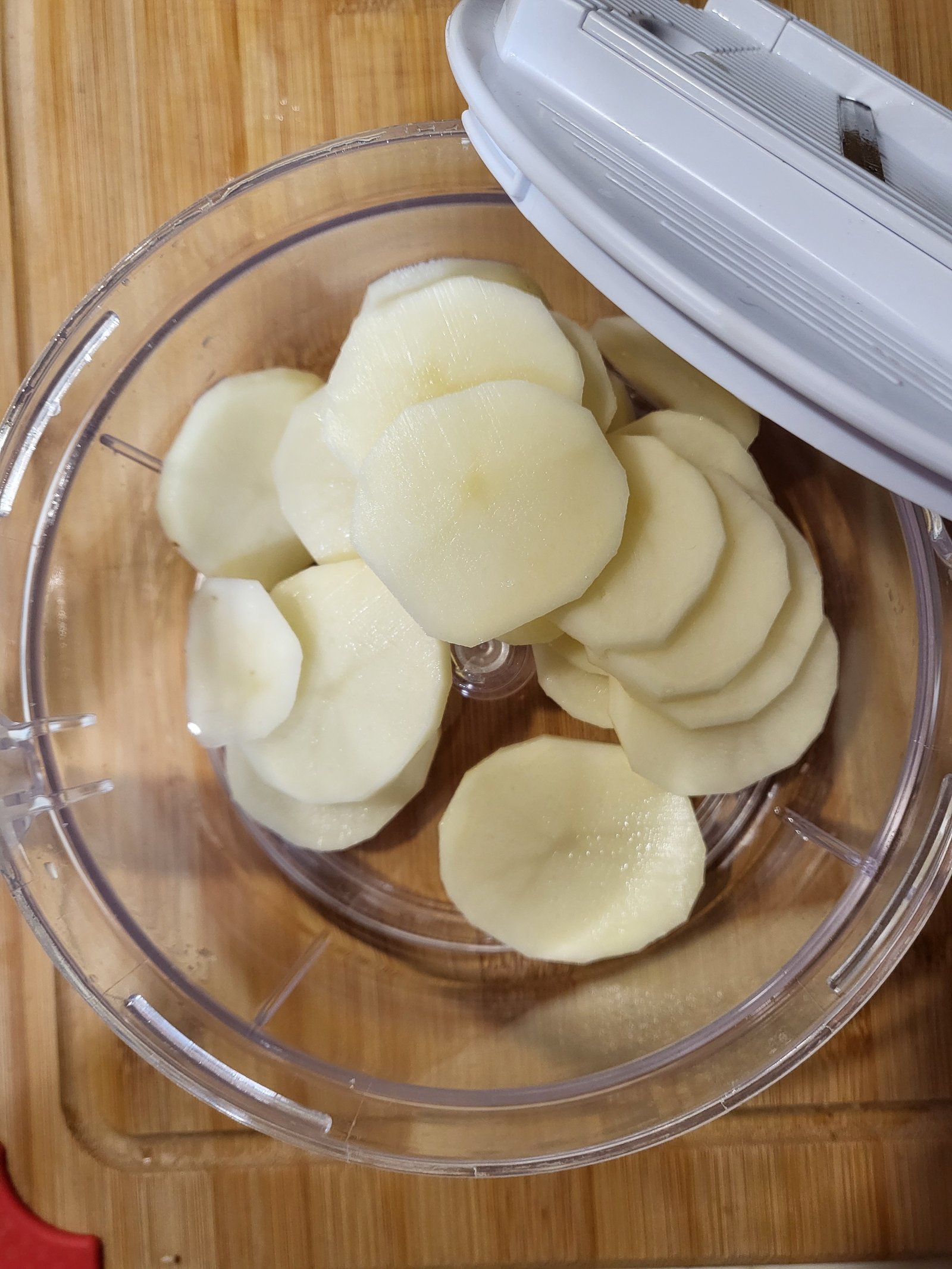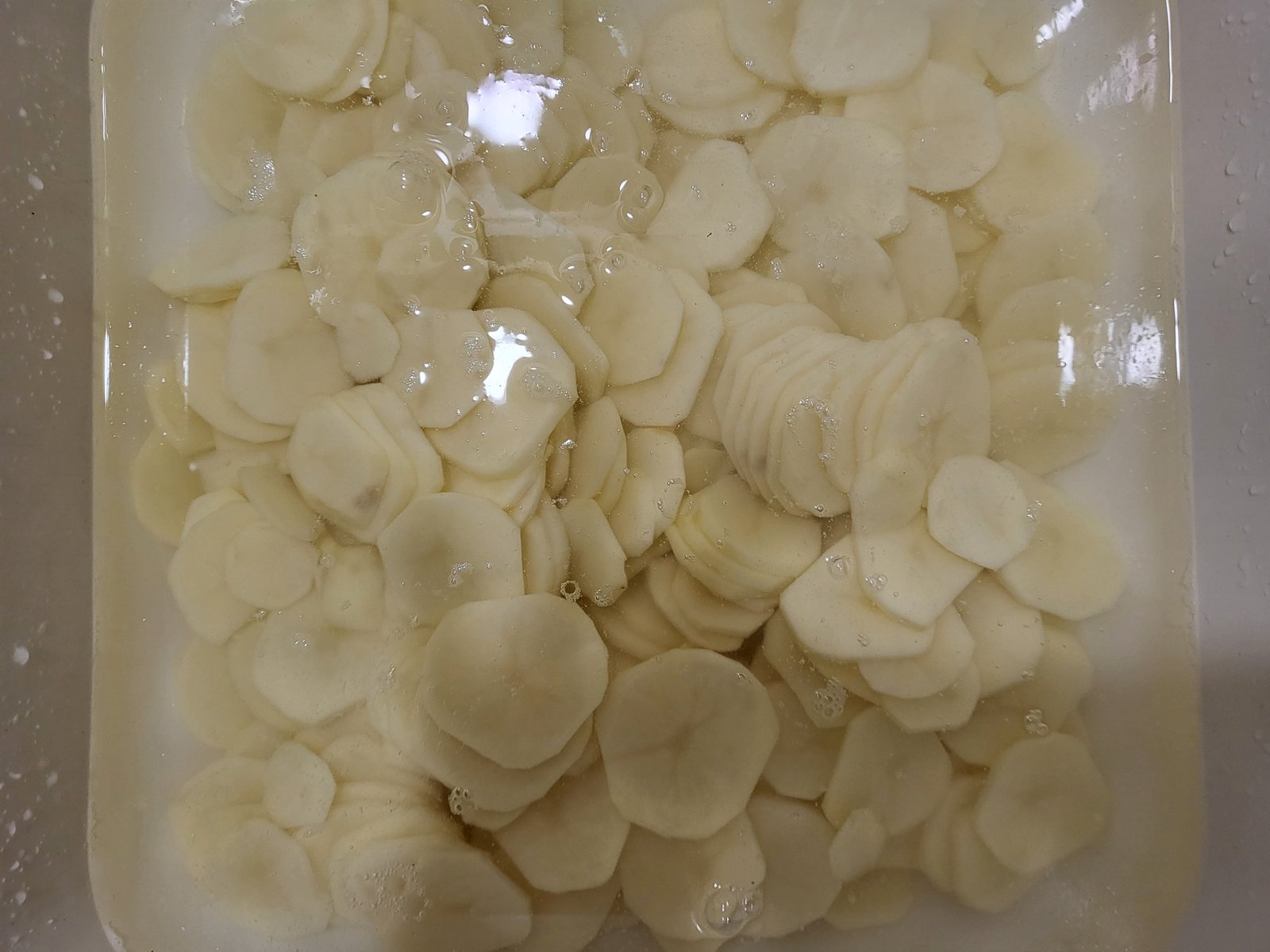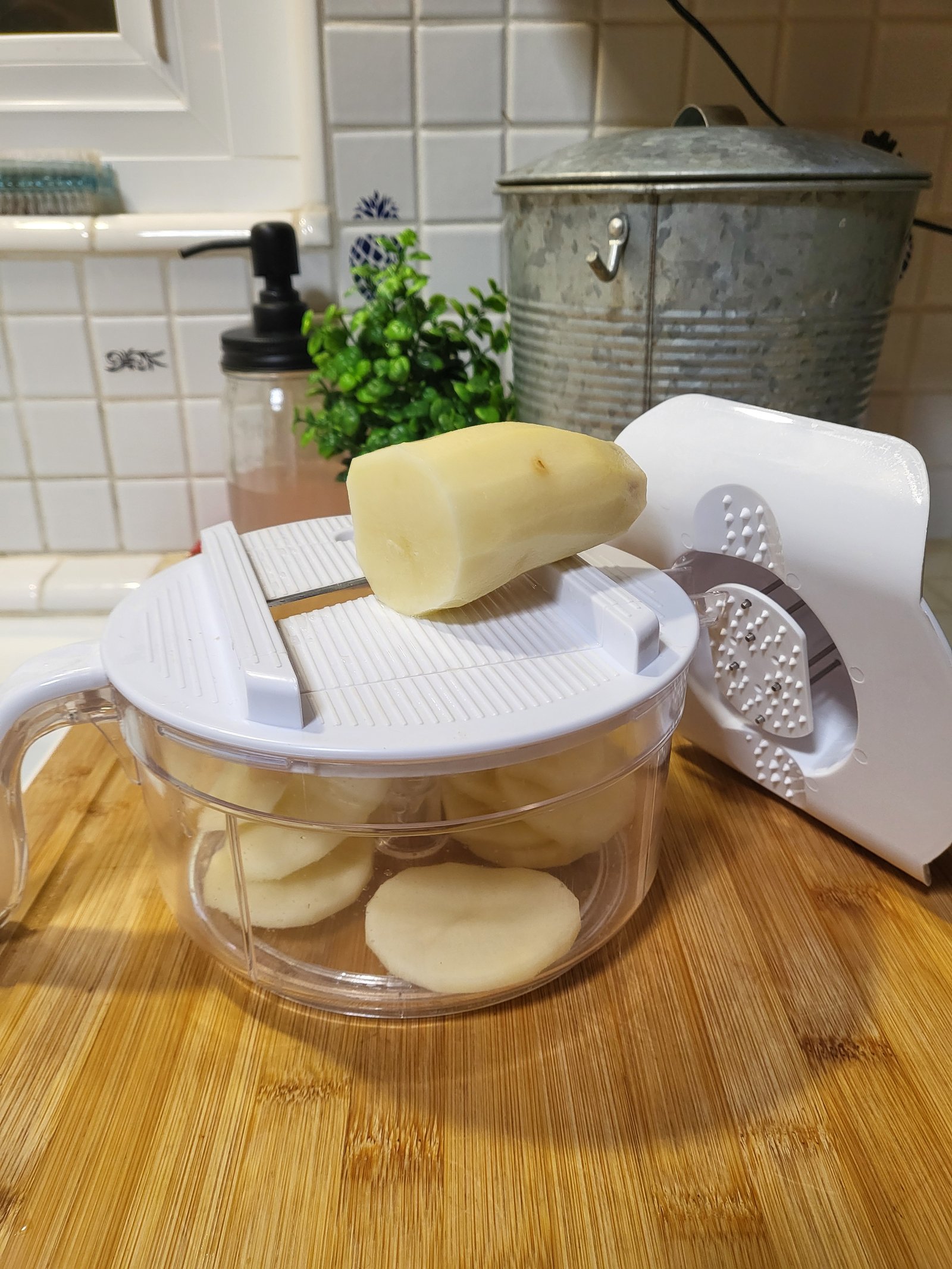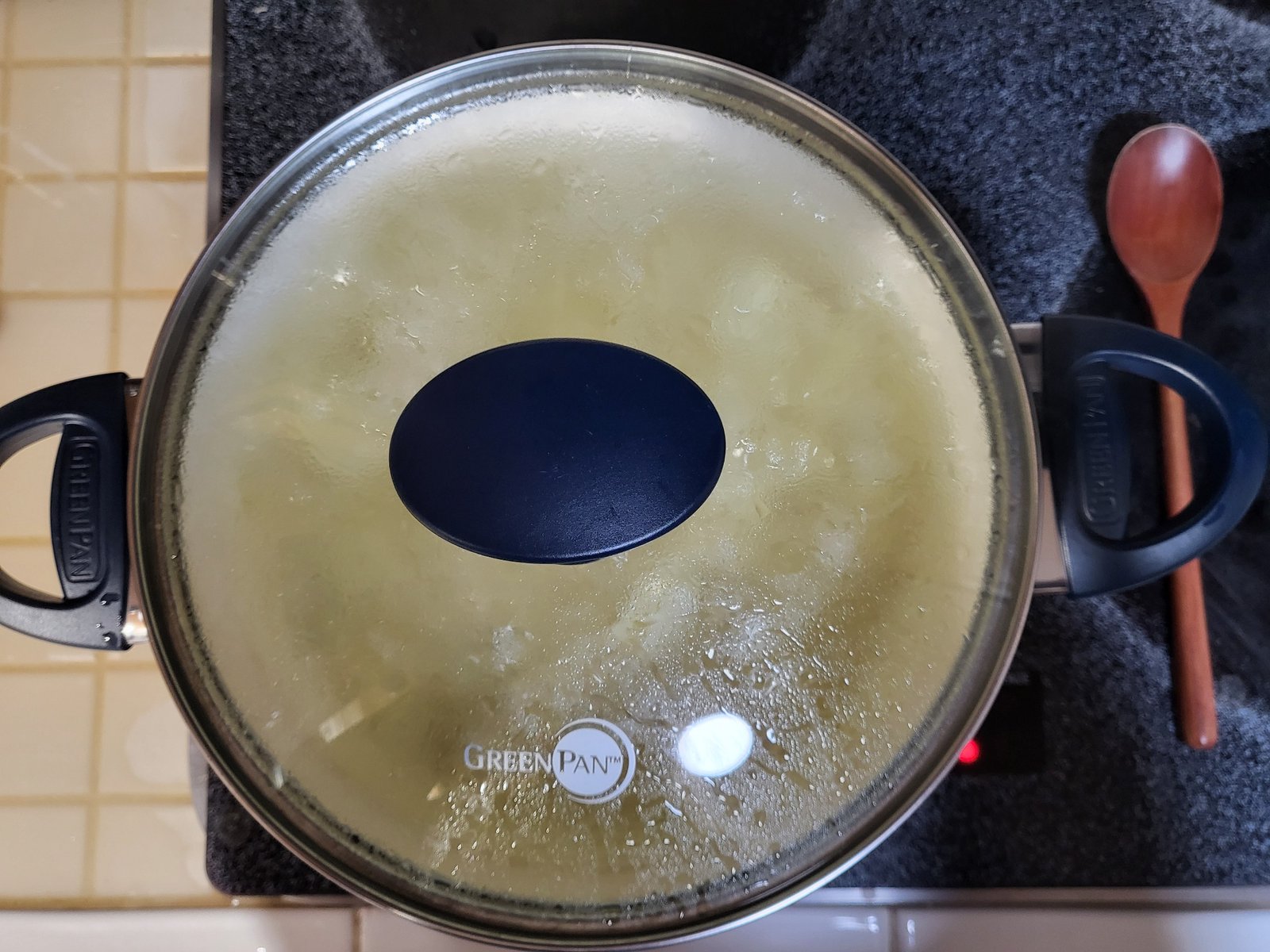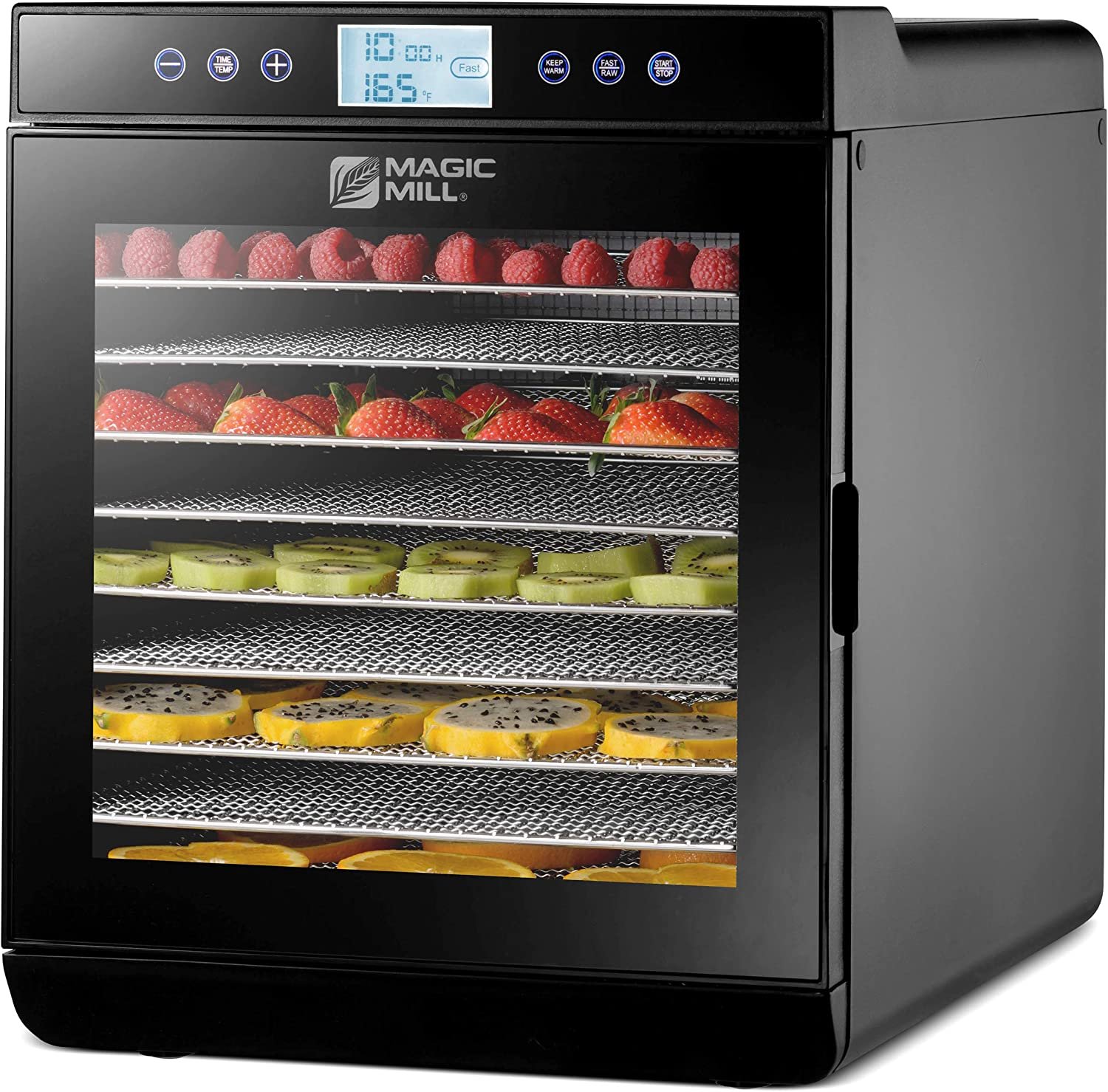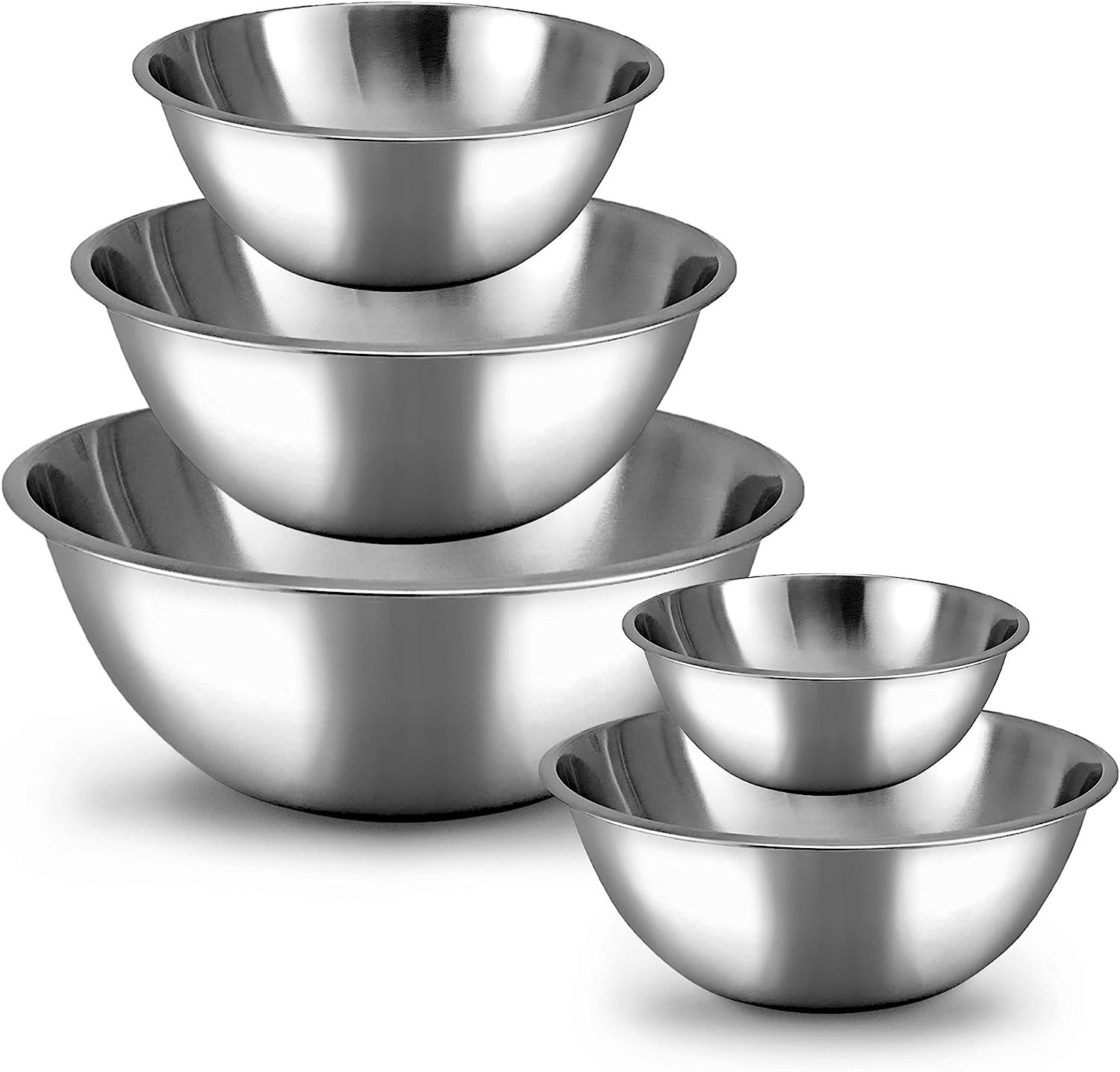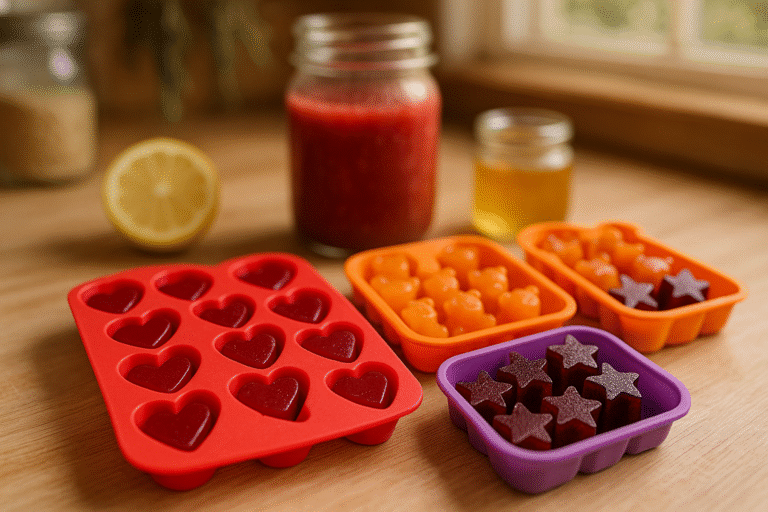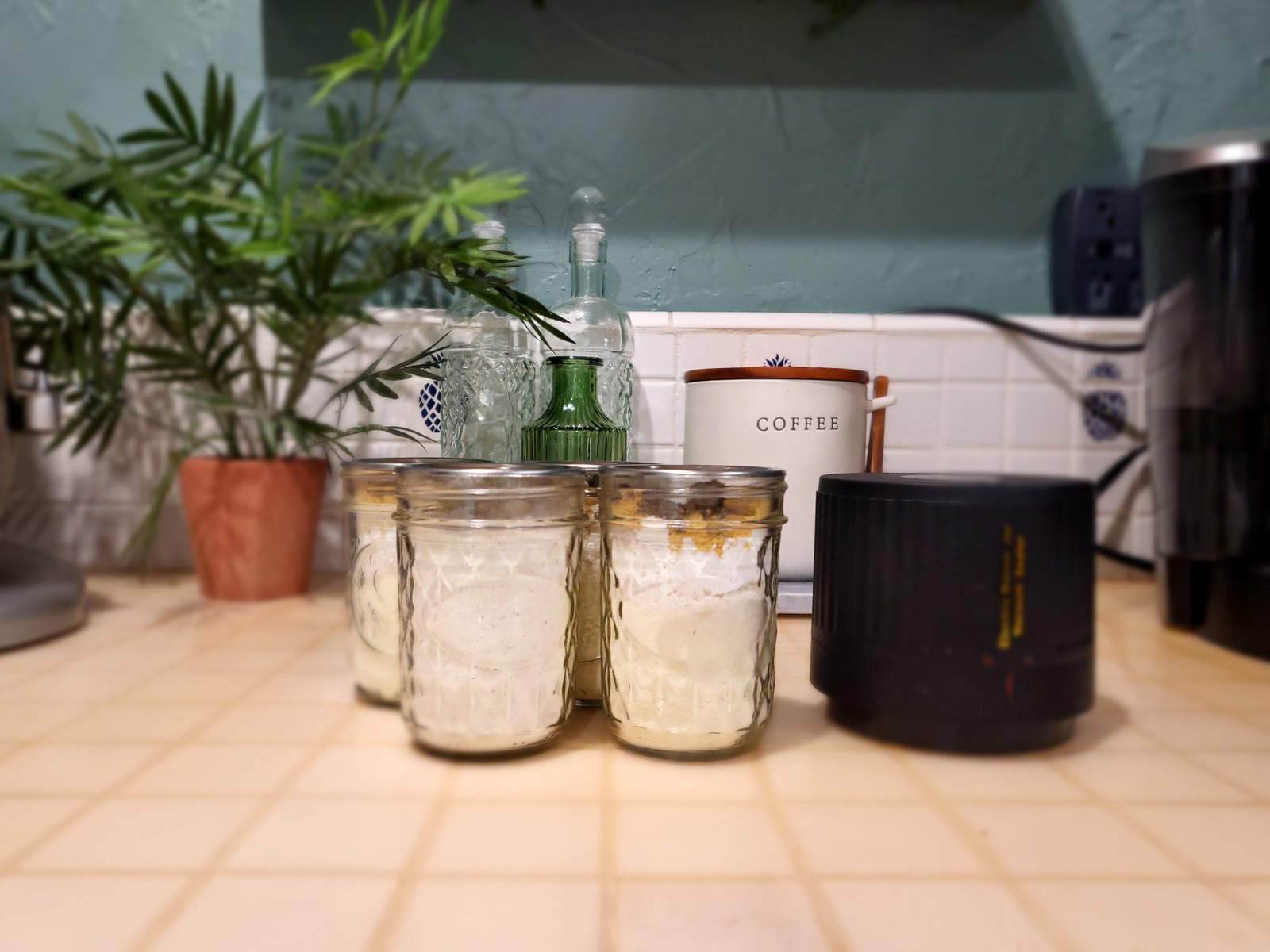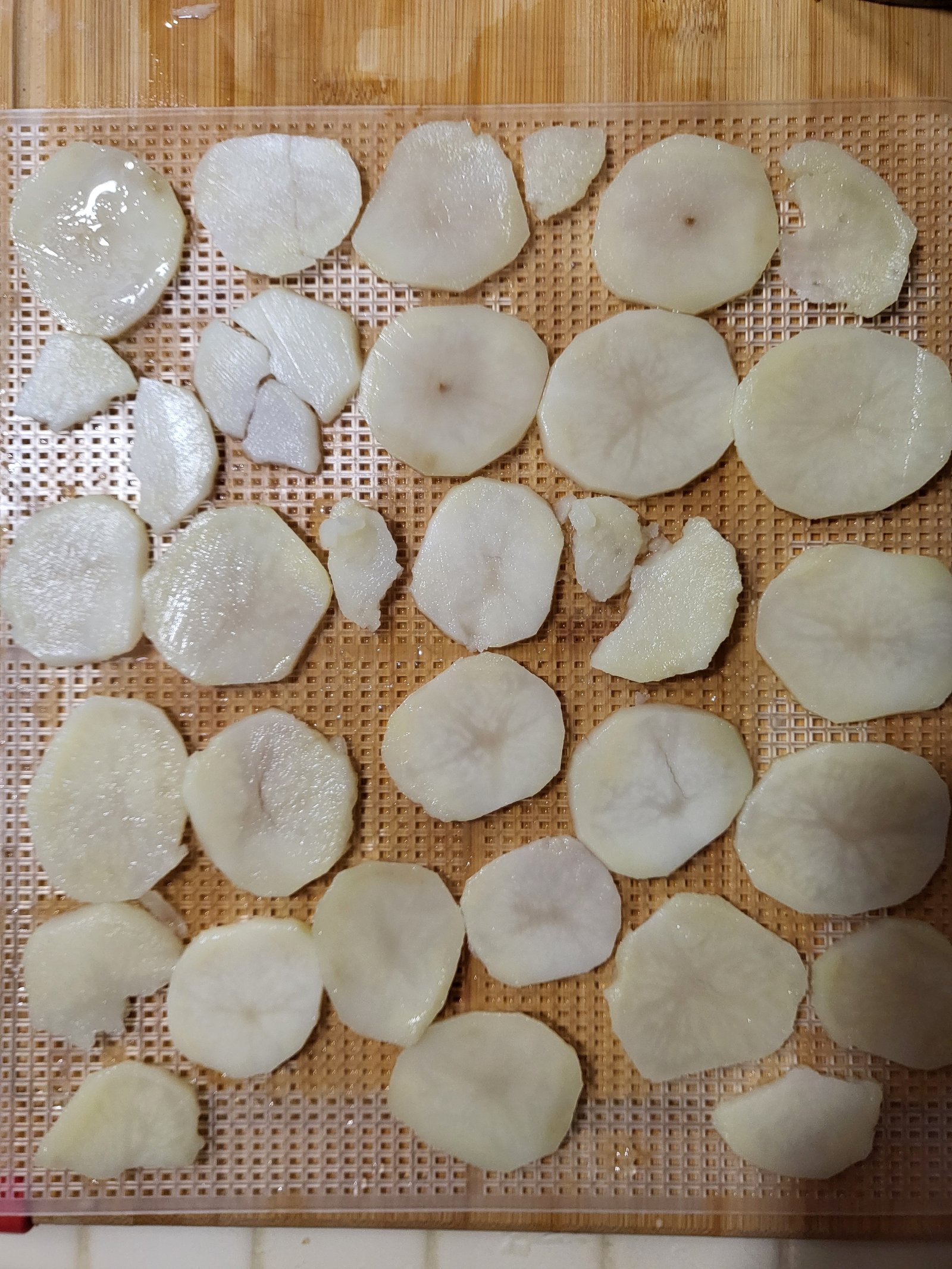
Why Dehydrate Potatoes?
When you think of dehydrating fruits and vegetable, potatoes are likely not the first thing you think of. After reading this post, I hope they become a more common food for you to dehydrate. Below are some ways to dehydrate them and what to use them for. In this post, I’ll just be covering sliced potatoes which I use when making scalloped potatoes.
These are all easily rehydrated, especially if you blanch the potatoes before dehydrating them. Don’t skip that step just to save a little time. It will be well worth the effort later. Here are some ways to use dehydrated potatoes. As you can see, dehydrating potatoes is a fantastic way to preserve your harvest!
What Type of Potatoes To Use
There are plenty of potato varieties to choose from when dehydrating potato slices. Almost any variety would work well. I recommend using the variety that you would use if making the dish from scratch. I like the creaminess of yellow potatoes when I make mashed potatoes, so when dehydrating for mashed potatoes, I’ll choose yellow ones. Scalloped potatoes are typically made with Russet potatoes, so start with those.
If you’re using your own, home-grown potato harvest for dehydrating, any variety that you’ve grown will do the trick. The only one you might not want to use is purple potatoes. Purple potatoes look bright purple when they are fresh, but can turn an unpleasant brownish color when they’re cooked. So for me, simply because of the unappealing color, I wouldn’t use purple potatoes for dehydrating. In this post, I used a five pound bag of Russet potatoes.
Preparing the Potatoes
You’ll need to peel and slice the potatoes first. I’m preparing these potatoes for making scalloped potato kits, so mine are sliced. If you’re making mashed potatoes, you’ll want to cube them and if you’re making hash brown potatoes, you’ll want to shred or grate them.
Slicing potatoes is pretty easy with a knife, but if you’re short on time, a food processor fitted with the slicing attachment could work well. Some KitchenAid mixer attachments can also slice the potatoes. With both of these methods, you’ll need to chop the potatoes a little smaller to get them to fit through the hoppers.
The easiest method is probably using a mandolin. They can easily be found at thrift stores or fairly inexpensively on Amazon. This is the one I use.
Wash and peel the potatoes, making sure to remove any brown spots. This will make the best end product.
If you have any green potatoes, don’t use those. Green potatoes are known to be toxic and it’s not worth the risk.
Potato skins can make it easier for bacteria to grow, including botulism. Don’t dehydrate unpeeled potatoes.
I used a mandolin for even thickness in my potatoes and because it makes the process quick and easy..
If you’re making hash browns, grate the potatoes. If you’re making mashed potatoes, cube them.
I recommend an adjustable mandolin. This will allow you to make the sliced the right thickness for you.
Before you dehydrate the potatoes, you need to cook them, but not all the way. This allows them to rehydrate better when the time comes. Boil them for 5 minutes (timer starts when the water is boiling).
After you’ve blanched them, drop the potatoes in cold water to stop the cooking process and make them easier to handle.
Dehydrating
Next, you’ll need to spread the blanched potatoes in a single layer on a dehydrating tray. I have a box dehydrator, so my trays are rectangular. I can fit 9 trays in my dehydrator, so a 10 pound bag of potatoes is perfect. I use the standard plastic trays for potatoes. I also have some silicone mats that I use for bananas and fruit rolls, but I wanted a little more air flow for these. Potatoes aren’t sticky, so I’m not worried that they’ll be difficult to remove from the trays.
I recommend only preparing enough potatoes to fit your dehydrator. That way, you don’t need to store the prepared potatoes for an extra day or so until you are able to dehydrate them. If you have a smaller dehydrator, you might be able to prepare 5 pounds at a time. On the other hand, if you have an even larger dehydrator or more than one, you could easily prepare more potatoes for dehydrating. This can be great if you find a good sale on potatoes and want to stock up.
The potatoes are a little softer after blanching, so be gentle when handling them. I ended up with some really small bits at the end, so I just tossed those. It wasn’t worth the effort to spread them out, but feel free to use all the pieces. You could also gather the pieces and freeze them, slowly adding to the frozen bag every time you make sliced dehydrated potatoes. Then, when you have enough, you could prepare some mashed potatoes for immediate use or even to dehydrate.


Dehydrate
Dehydrate the potatoes for 10-12 hours at 140°F (60°C). Check them after 8 hours and remove any that might be done. Potatoes can get a little scorched if they are left in too long, so just check them every once in a while after 8 hours. They should be very brittle with no bending when properly dry.
You’ll notice the potatoes start to lift off the tray a little when they are close to done. No need to check constantly, but every hour or two is good. When your slices are uniform and all the same thickness, they should all dry at about the same rate.
One way to slightly decrease the drying time is to pat down the potatoes before dehydrating them. I didn’t do this as they were breaking fairly easily after being blanched, but if you are short on time, this can save a little. Dehydrating potatoes is really an easy task. You’ll just turn the dehydrator on and walk away.
Storing Dehydrated Potatoes
One your potatoes are dry, you’ll need to let them cool completely before storing them. Put your dried potatoes in an airtight container. I like to use mason jars and vacuum seal them for extended freshness. Store in a cool, dark place away from direct sunlight. If properly stored, dehydrated potatoes will last up to 12 months.
To rehydrate the potatoes, either add to soups and stews or pour boiling water over them and let them sit for 5-10 minutes and use as is they were fresh.
I like to use my sliced dehydrated potatoes for scalloped potatoes, but you could easily add them to any dish. They are a great pantry staple to have on hand.

These are some of the tools I use in my kitchen to help prepare my potatoes for dehydrating. If you are wondering what would be useful for you, I recommend these items. They make dehydrating potatoes much easier for me.
Mandolin
I’ve updated the mandolin I use since creating this post. This is the one I currently use and I really like it. I love that I can adjust the thickness of the slices.
Dehydrator
This is the updated version of the dehydrator I use. I absolutely love it and it’s been a real work horse for me.
Stainless Steel Bowls
I love my stainless steel bowl set. They sell many with lids, but I find that I don’t use them and need to find a place to put the lids, so I like the sets that don’t include any.
*As an Amazon affiliate, I may receive a small commission at no additional charge to you.
Recipe
Dehydrating sliced potatoes.
Ingredients
10 pound bag of potatoes
Water
Directions
- Peel and slice the potatoes. Use a mandolin to get even and thin slices. Place potatoes in a bowl of clean water as you work to prevent browning.
- Blanch the potatoes by boiling them for 5 minutes. The 5 minute timer starts when the water is boiling, not when you add the potatoes to the water.
- Remove the cooked potatoes from the boiling water and immediately put them in cold water to stop the cooking process.
- Spread the blanched potatoes in a single layer on a dehydrating tray.
- Dehydrate at 140°F (60°C) for 8-12 hours or until brittle.
- Store in an airtight container for up to 12 months.
FAQ’s
Making Homesteading Easy
Linda shows people how to get started with their homesteading journey in a way that makes sense. Small sustainable changes make a huge difference and Linda walks you through all of it.

I’m all about helping people learn to be more self sufficient and live a homesteading lifestyle. If you ever have any questions, I’m an open book and would absolutely love to share with you. All you need to do is email me and I’ll get back to you with everything I than think of to help. Need a recipe? I’ve probably got one for you. Having trouble with your garden? I’ve probably dealt with the same thing. Just want someone to cheer you on? I’m your biggest fan!
None of us gets to where we are alone. Please don’t feel like you need to try. I’m here to help.


